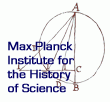Mathematical Books
Around the year 1600 mathematics was a multi-faceted and diverse field of knowledge. Pure mathematics consisted of geometry and arithmetic, while sciences such as astronomy and optics were counted among the so-called 'mixed' mathematical disciplines. Practical mathematics also flourished, and certain fields (for example, architecture) became the domain of mathematical expertise. In the sixteenth century, Antwerp developed into an important center of practical mathematics, where mathematical culture intersected with the worlds of commerce, long-distance trade and navigation, printing, conspicuous consumption and collecting, as well as the realities of warfare. The broad reach of mathematics is reflected in the range of books in Ximenez's library.
In the field of geometry Ximenez owned several copies of Euclid's Elements, among them the edition by Christoph Clavius, the head mathematician of the Collegio Romano, published in Cologne in 1591. Practical geometry is equally well represented in Ximenez's library. A good example is Albrecht Dürer's Underweysung der Messung, of which Ximenez owned the edition published in Arnhem in 1604; this edition also containes Dürer's treatise on fortifications (Underricht zu Befestigung der Stett, Schloss und Flecken). Characterized by a concern for construction rather than demonstration, books on practical geometry often focused on instruments. A good example is Johannes Stöffler's Elucidatio fabricatae ususque astrolabii; Ximenez possessed the 1553 Parisian edition. Other books on mathematical instruments listed in the inventory include Jacques Besson's Theatrum instrumentorum et machinarum (the first edition under this title was published in 1578); Giovanni Paolo Gallucci's Della fabrica et uso di diversi stromenti astronomia et cosmografia (Venice, 1597); Cherubino Sandolini's Nova horologiorum inventio (Venice, 1600) (the latter two both published with the printer Roberto Meietti); Latino Orsino's Trattato del radio latino, 1586 (which in the inventory is incorrectly listed as 'trattado' under the heading of works in Spanish); and Oronce Finé's De solaribus horologiis (Paris, 1560). With an additional three works by Finé in Ximenes' library - Quadratura circuli (Paris, 1544), In proprium planetarum aequatorium (1538) and an edition of Arithmetica practica - the prolific French mathematician is well represented in Ximenez's library. Finé's books also illustrate the virtually all-embracing scope of Ximenez's mathematical interests. Ximenez seems to have been interested in all the worlds intersecting with mathematics. He did not have a special interest in any particular field of mathematics.
Given the fact that Ximenez possessed several instruments made by Michiel Coignet, the almost complete absence of books by Coignet is remarkable. The exception is the adaptation to Valentin Mennher's Livre d'arithmétique, which Coignet published in 1573 together with his own Cent questions ingénieuses. The book was dedicated to Balthazar Schertz, one of Antwerp's wealthiest merchants. Illustrating the interconnectedness of the worlds of arithmetic education and commerce, Ximenez also owned several other books on arithmetics including Johannes Blasius Martinus Silicaeus's Arithmetica (1526) and Petrus Apianus's Ein newe vnd wolgegründte Underweisung aller Kauffmans Rechnung (1537). Ximenez also had a good number of works on navigation. Mathematics was important in this field for determining longitude, among other things. It deserves mention that Ximenez owned a copy of William Gilbert's De magnete, in which the author discusses magnetic inclination and speculates that the Earth was a rotating magnet. It was one of the few books Ximenez owned in which he would have encountered a defense of Copernicus.
The near absence of Coignet's books was partly compensated by Ximenez's ownership of a Coignet manuscript on geometry and fortifications. Military architecture was an important field of mathematical expertise in the sixteenth century, and publications on fortification were often vehicles for the transmission of all kinds of mathematical knowledge to practicing engineers and nobles alike. The dominance of Italian military engineering is reflected in the books on fortification, mostly in Italian, in Ximenez's library: Buonaiuto Lorini, Delle fortification (1596), Girolamo Maggi, Della fortificatione della città (1564), and Antonio Lupicini, Architectura militare (1582). When he sent news of the siege of Ostend to Antonio Neri in letters between 1601 and 1603, Ximenez also announced the publication of Prince Maurits's "mathematical book" (in fact, that of his engineer, Simon Stevin) in a letter of 26 October 1601. A copy of Stevin's Wisconstighe gedachtenissen is found in Ximenez's library. The book covers all fields of mathematics, which corresponds with other indications that Ximenez's interest in the field was quite general.
However, this said, Ximenez was not interested in everything mathematical. With the notable exceptions of astronomy and astrology, Ximenez's library does not reflect any special attention to mixed mathematical fields such as music and optics. For optics he had hardly anything beyond the then basic introductory text, John Pecham's Perspectiva communis, in Georg Hartmann's edition of 1542 and in a second copy. Ximenez also owned Francesco Maurolico's De lumine et umbra (1613), a publication in which Clavius had a hand. However, the number of books on optics that Ximenez could have owned, but are not listed in the inventory is striking: the 1535 edition of Witelo by Georg Tannstetter and Apianus, Friedrich Risner's edition of Alhacen and Witelo (1572), and Kepler's Paralipomena (1604), to name but a few.
Literature
Meskens, Ad. Practical Mathematics in a Commercial Metropolis: Mathematical Life in Late 16th Century Antwerp. Dordrecht: Springer, 2013.
Dupré, Sven. "Trading Luxury Glass, Picturing Collections and Consuming Objects of Knowledge in Early Seventeenth-Century Antwerp." Intellectual History Review 20 (2010): 53-78.
Marr, Alexander, ed. The Worlds of Oronce Fine: Mathematics, Instruments and Print in Renaissance France. Donington: Shaun Tyas, 2009.


